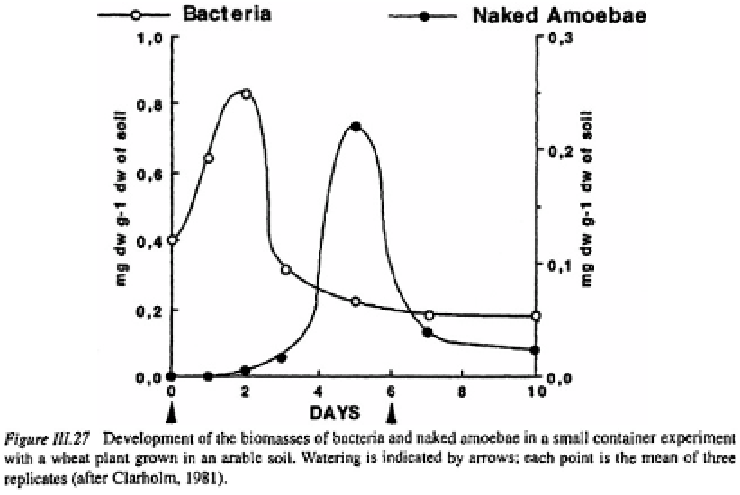Agriculture Reference
In-Depth Information
As illustrated above, any sudden change in soil conditions which induces a burst of
microbial activity will affect protists, after a time lag of a few days. Among the events
which may trigger a burst of bacterial development, and subsequent protist abundance are
watering of a dry soil, rhizosphere activity (especially close to root-tips) and activation
of microflora due to invertebrate activity, particularly that of earthworms.
4.1.2
NEMATODES
4.1.2.1
General Biology
Nematodes are filiform, acoelomate Metazoa, with neither circulatory nor respiratory
systems, although they have a complete digestive apparatus. In soil environments, they
may be free-living in soil water films, or phytoparasitic and live at the surface or within
living roots.
Free-living, soil-inhabiting species are small (0.15 to 5 mm long and 2 to 100 µm wide
with individual weights of 20-60 ng) with the exception of the Mermithidae, a group of
giant nematodes up to 20 cm long which are a constant component of some humid
tropical soil communities (Goodey, 1963). They are hydrobionts and live in the water which
fills soil capillaries and covers roots and solid particles, or within plants as parasites.
Respiration occurs by simple oxygen diffusion through the cuticle, which is permeable
to water. Respiratory rate is high (
ca,
100 ml f wt according to Nielsen, 1949).
A general relationship between respiration rate (R) and individual weight (m) is given by
theformula (Klekowski
et al.,
1972). Respiratory rates of phytoparasitic
nematodes decrease sharply when they are deprived of food (Reversal, 1981a).




